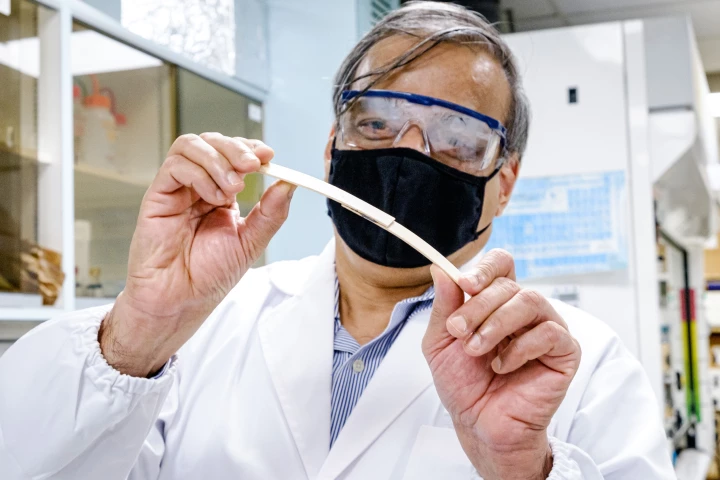Glue
-
Although there are glues that work underwater, they typically require at least 24 hours to set – which can be tricky in chaotic marine environments. A new additive, however, reportedly allows underwater resin adhesives to set in just 60 seconds.
-
Ordinarily, epoxies are cured by exposure to either heat or ultraviolet light. Both have their drawbacks, which are nicely avoided by a new epoxy that hardens when passed through a magnetic field to produce a similar bond using a fraction of the energy.
-
Ordinarily, if you want to separate two objects that are glued together, harsh solvents or mechanical force are required – either one could damage the items. A new glue, however, releases its bond by simply turning to gas.
-
While we've certainly heard of epoxy resins that harden when exposed to light, usually all of the substance has to be exposed. A new additive causes resin to solidify when even only a bit of it gets lit up, however – plus it works underwater.
-
Although superglues can be quite useful, they're typically made from harsh chemicals, plus it's very difficult to "unstick" them once they've set. Now, however, scientists have created a plant-based superglue that can easily be removed when needed.
-
While it's good that there are plastics which biodegrade, the glue used to join pieces of those or other materials together isn't as eco-friendly. Scientists have set about addressing that problem, however, by developing a biodegradable adhesive.
-
Scientists in Canada have come up with a new adhesive they say can address some of the shortcomings of commercial glues, using ultra-strong connections at the molecular level to create new kinds of bonds between unlikely material partners.
-
Disassembling electronics into their various components for recycling is a laborious process, and involves the use of eco-unfriendly solvents. Now, however, scientists have developed a magnetically-deactivated glue that could address these problems.
-
The promise of reusable sticky things, from Post-it Notes to Blu Tack, has never quite been fulfilled. They're just never quite as sticky the second time around, or the third. But now, a team of engineers thinks it has an answer, inspired by one of nature's great stickers, the humble, slimy snail.
-
Depending on their formulation, most adhesives fail either when they're exposed to excessive humidity, or when they dry out in arid conditions. Honeybees, however, don't have such problems with their "pollen pellets." A new understanding of why this is so could lead to better manmade adhesives.
-
Advanced surgical glues that seal wounds faster could mean big things when it comes to medical care. A new material is showing particular promise in this regard, with the ability to be squirted directly into a wound, seal it in 60 seconds and dissolve thereafter.
-
As any good metallurgist will tell you, you can't just take any two types of metal and weld them together. You may instead be able to just join them together with glue, however, thanks to an electro-chemical etching process being developed at Germany's Kiel University.
Load More











